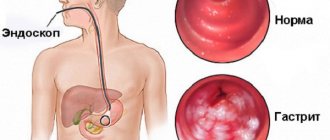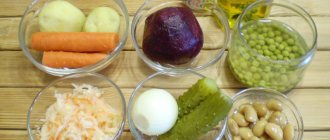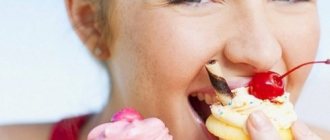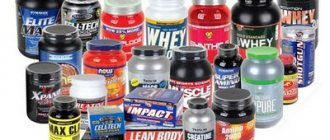The diet for hemorrhagic gastritis should be aimed at preventing exacerbation of the disease. Today the disease is quite widespread. Hemorrhagic gastritis is a severe form of the inflammatory process. Its peculiarity lies in the appearance of microcirculatory pathologies in the vessels located in the submucosal gastric layer. If not treated promptly, it can lead to hemorrhage and the formation of blood clots in small vessels.
The disease cannot be taken lightly, because it can cause the growth of cancer cells at the site of the lesion.
At the first symptoms, you should immediately consult a doctor, because the disease can be caused not only by exposure to alkalis and acids, as a result of poor nutrition, but also by the Helicobacter bacterium. Even if a person follows a diet, it will not be possible to remove it from the body without proper antibacterial treatment. The diet helps restore the mucous membrane and prevent the development of the disease. The basic rule is to adhere to fractional meals (eat small portions every 2 hours). The last meal should be taken at 17:00. An hour before bedtime, you can drink a glass of skim milk or kefir.
All dishes are steamed, in a slow cooker, or eaten boiled or baked. It is preferable to consume food in a crushed (using a blender), liquid and mushy state.
People suffering from this disease are advised to stick to the diet for a long time. Before consuming dietary foods, consultation with a doctor is strictly required.
Erosive
Erosive differs from the now common gastritis, which occurs in almost every tenth person. It has a long course and requires a longer course of treatment. The main thing is not to forget that diet for erosive gastritis is very important. Erosive gastritis forms 2-3 (maybe a little more) inflamed areas with areas of visible redness. But in some cases, the affected area can occupy the entire inside of the stomach.
With erosive gastritis, a complication may occur in the form of gastric bleeding. The most dangerous are erosive areas located at great depths, near large vessels, as they can provoke increased bleeding.
This type of gastritis can be acute or chronic. Acute occurs if you constantly eat foods that are heavy and harmful to the stomach or take medications that cause inflammation for a long time.
Another stage is chronic. It is expressed by persistent inflammation of the stomach. This leads to disruption of the secretory and motor function of the gastric mucosa. Sometimes violation of the regime leads to a worsening of the condition, and then, in addition to medications, a special diet can help. The doctor will develop it, he will also tell you what to eat for erosive gastritis.
Chronic gastritis also affects people who frequently use a lot of medications that irritate the stomach, such as antibiotics. Also at risk are people working in hazardous industries. And of course, those who often suffer from infectious diseases due to the effects of toxins on the body.
And another form of gastritis, which occurs quite often, is the erosive antral form. It affects the lower third of the stomach, where conditions are ideal for the proliferation of pathogenic bacteria Helicobacter pylori. The toxins they produce irritate the mucous membrane and cause inflammation.
What sweets are absolutely contraindicated?
Even with long-term and persistent remission of gastritis, you should not consume sweets that can cause irritation of the gastric mucosa. The list of prohibited foods and dishes includes:
- fresh baked goods;
- cakes;
- cookies with yeast, chocolate or nuts;
- chewing gum;
- citrus fruits, any sour berries, fruits and vegetables;
- halva and any oriental sweets with nuts;
- dried fruits;
- raspberry jam;
- carbonated drinks.
Harm to the stomach when consuming such products occurs due to an increase in the acidity of gastric juice, as well as due to the irritating mechanical effect of the mucous membrane when eating rough food. Almost all patients are aware of the mechanical negative effect on the mucous membrane of nuts and desserts based on them (halva, kozinaki), but not everyone knows that dried fruits (raisins, dried apricots, dates) can also injure the digestive tract due to their hard-to-digest peel.
Symptoms
The symptoms of erosive gastritis are the same as those of ordinary gastritis. Consequently, it is possible to determine their characteristic features only by some indirect signs, manifested in the form of a long and persistent course. During the period of exacerbation, closer attention to the body is necessary. And remember that diet for erosive gastritis is an important part of treatment. You should know the symptoms that indicate that you should urgently contact a specialist. These include:
- abdominal pain of varying intensity. Unpleasant sensations vary depending on the size of the affected area. So, the more there are, the more pain. In this case, it will be necessary to take strong analgesics;
- in the chronic form, burning and heartburn appear;
- belching, bitter taste in the mouth and diarrhea;
- after eating, pain symptoms intensify.
If these symptoms appear, you should consult a doctor. He will prescribe medications, as well as a diet for erosive gastritis.
Symptoms of acute erosive gastritis are characterized by a sudden onset with a sharp deterioration in the condition. In the chronic form, signs are almost impossible to detect at the onset of the disease. They occur only when blood appears during bowel movements and vomiting. For any manifestations of gastritis, you should consult a doctor.
In addition to treatment with medications under the supervision of specialists, you must follow a strict diet. This is due to the fact that the products entering the stomach during this disease should not aggravate the patient’s condition or provoke an exacerbation, but must have a gentle effect on him and replenish vitamins and microelements.
What's not allowed?
Sugar in gastritis is not dangerous in itself. But many confectionery and flour products are prohibited. You can't eat:
- All types of cakes and pies.
- Fatty foods: for example, creams, icing, “sweet” fillings. They will increase the level of acid in the stomach.
- Sweet baked goods.
- Cakes.
- Some types of cookies. Particularly those prepared using yeast.
- Chewing gum. Because of them, a lot of gastric juice is produced.
- Halva. This is “heavy” food that is difficult to digest.
- Dried fruits. Their skin is too hard.
- Raspberry jam.
- Sodas.
A lot of sweet and tasty foods are prohibited. Therefore, it is better to focus on the list of permitted products. If there is no treat in it, then it is not worth eating.
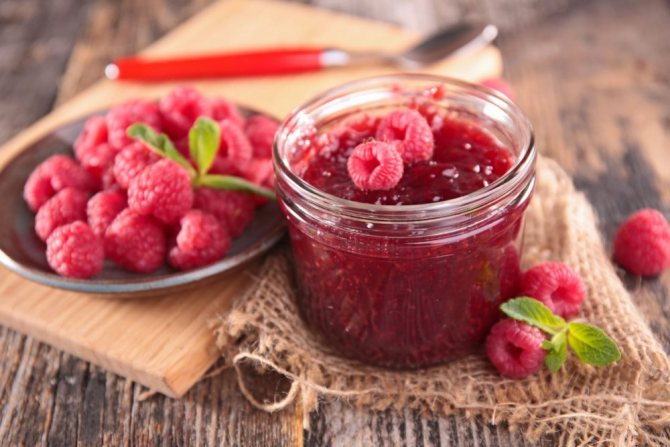
Raspberry jam is prohibited for gastritis
Erosive gastritis. Treatment and diet
Dietary nutrition for such a disease depends on what form the patient suffers from.
Thus, for acute erosive gastritis, dietary table No. 1 is prescribed. This special diet limits the consumption of foods that can stimulate secretion, as well as foods that irritate the gastric mucosa.
The amount of food consumed per day must be divided into several meals. The most correct thing would be to divide it into 6 meals, i.e. approximately eat every 2 hours.
Food for erosive gastritis must be prepared by stewing or boiling. Steaming is also acceptable. Some doctors allow baking, but a hard crust should be avoided.
During exacerbation of erosive gastritis, the diet must be strictly followed in order to reduce foci of inflammation, speed up healing, and normalize the functioning of the stomach.
Don't forget about liquid! It must be consumed in the amount of 1.5 liters per day. But this includes drinks and soups.
The benefits of milk
Dairy products are very healthy; they contain easily digestible proteins, calcium and various vitamins. It is especially important to include dairy dishes in the diet of children and adolescents, since the growing body especially needs a large amount of proteins.
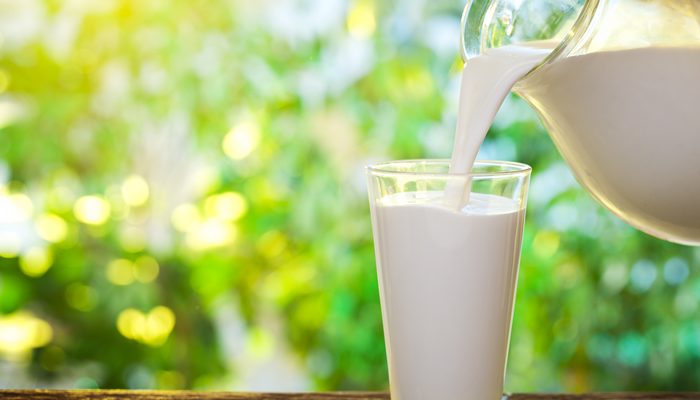
Dairy products are beneficial for the gastrointestinal tract. They well envelop the mucous membranes of the digestive organs, protecting them from damage and promoting faster healing of existing damage.
For this reason, dairy dishes are an excellent prevention of the development of gastritis and ulcerative lesions of the digestive system. To ensure that the product is well absorbed, it is better to consume it in small sips. In this case, the drink should be at room temperature.
You should choose foods with a low fat content, as they do not put stress on the liver. This product allows you to speed up metabolic processes, removes harmful cholesterol, and helps normalize weight.
Advice! However, some people are intolerant to dairy products due to a lack of enzymes that allow them to digest milk sugar. If after consumption you feel discomfort and “seething” in the stomach, it is better to switch to fermented milk products.
Diet No. 2
In the chronic form of gastritis, diet No. 2 is prescribed. This nutritional system provides more variety in food, since the acute period has passed and less can be spared the gastric mucosa. However, moderation is required. You need to steam food. The following possible cooking options are also allowed: stewing and boiling. You can chop food less and puree only tough, fiber-rich foods. Fried food is allowed. But only without breading and fried crust.
Erosive antral gastritis. Diet
In the first days, it is necessary to cleanse the body, so you need to fast for 1-2 days. At this time, you can have weak black tea or mineral water. Then you need to eat food often, but in small portions, boiled and pureed. For example, various cereals, vegetable purees, chopped meat. The ban applies to foods that are difficult to digest and linger for a long time. Take food warm.
It is necessary to take antibiotics with food.
Do not forget about traditional medicine. Among these recipes one can highlight, for example, potato juice (freshly squeezed), cabbage juice, tinctures of burdock and plantain roots and much more.
What is possible?
If you have gastritis, you can eat:
- puddings, they are best made from semolina;
- fruit or berry puree: such desserts contain a lot of vitamins;
- souffle of fruits, vegetables or cottage cheese;
- homemade marmalade, but it must be made without powdered sugar;
- marshmallows, it improves digestion;
- “unleavened” cookies without fat: biscuits or oatmeal are suitable, eat them as a bite with tea or herbal infusions;
- Yoghurts;
- jelly and compotes;
- natural juices.
For gastritis, you can and should use honey. But in small quantities. Don't eat it with spoons. Dissolve in water, tea, tinctures, add to porridge. It helps with inflammation, accelerates tissue healing, and improves microflora. It has antibacterial properties. To reduce acidity levels, eat warm honey between meals. And to produce gastric juice, drink a cold honey solution. Just eat right after that.
Sweets for gastritis are a pleasant dessert, and not a replacement for lunch. Don't eat too many treats, even if they are tasty and healthy. They should not contain any additives, fillings, flavors or dyes.
Diet for erosive gastritis. Menu
The diet for both chronic and acute gastritis can be quite varied:
- First breakfast: oatmeal with milk, jelly made from berries or fruits, a small piece of day-old bread or dried white bread.
- Second breakfast: a piece of bread with sour and mild cheese. Tea with milk or weak black.
- Lunch: chicken soup (secondary) with noodles, mashed potatoes, steamed meat zrazy, rosehip tea and crackers.
- Afternoon snack: baked pies with apples and milk.
- Dinner: steamed cheesecake, compote.
Meal option
A diet for erosive gastritis for a week may include various dishes from permitted foods. Eat simple vegetables that are easy to digest and easy to prepare. For example, potatoes, beets, carrots. From these products you can cook soup and make a wonderful salad. You can add some green peas to this dish. It is also possible to cook soups from milk. For example, wonderful rolled oats or semolina. And rice porridge will become your constant companion throughout your illness.
Meat is okay. It is allowed to cook chicken or turkey dishes. And rice can be served with stewed beef or lamb. In addition to meat, cutlets can be made from fish. When preparing dishes, it is permissible to use some types of fats. Recently, doctors have especially recommended consuming olive oil, which has a healing effect.
You can treat yourself to dietary kefir or yogurt. You can use cottage cheese, but it’s better to use it to bake steamed cheesecakes or make lazy dumplings and puddings. It is permissible to introduce egg omelettes into your diet.
Baked pies with apples or boiled meat can be served with tea with milk. Pies can be made with different fillings, for example, eggs, thick jam, cottage cheese. You can treat yourself to dry cookies.
Instead of tea, coffee with milk, fresh fruit compotes, jelly or rosehip tea are allowed.
Candies, chocolate
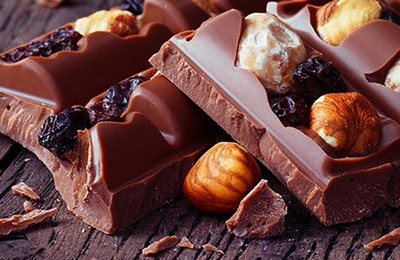
Chocolate and chocolate candies are not recommended for gastritis. During the remission stage, you can allow yourself butterscotch, as well as creamy caramel in small quantities.
Chocolate products are too high in calories and contain large amounts of butter. In chocolates, butter is often replaced with margarine, palm oil, etc., which makes the product harmful.
Important! It is better not to include chocolate in your diet if you have gastritis.
Caramel and toffee do not have as much fat, so they are lower in calories. As an addition to tea drinking, such sweets are quite suitable, but, again, in reasonable quantities.

